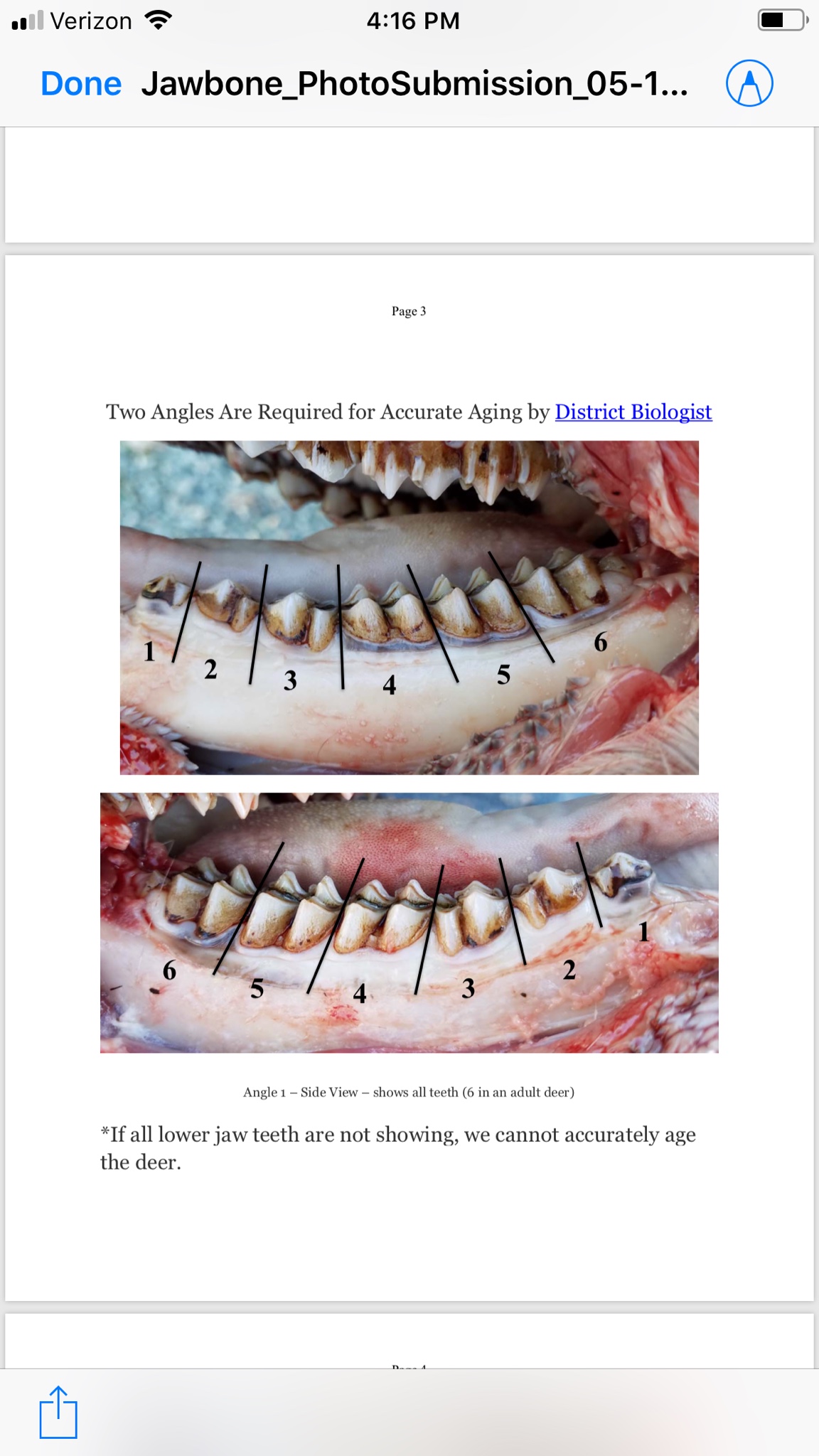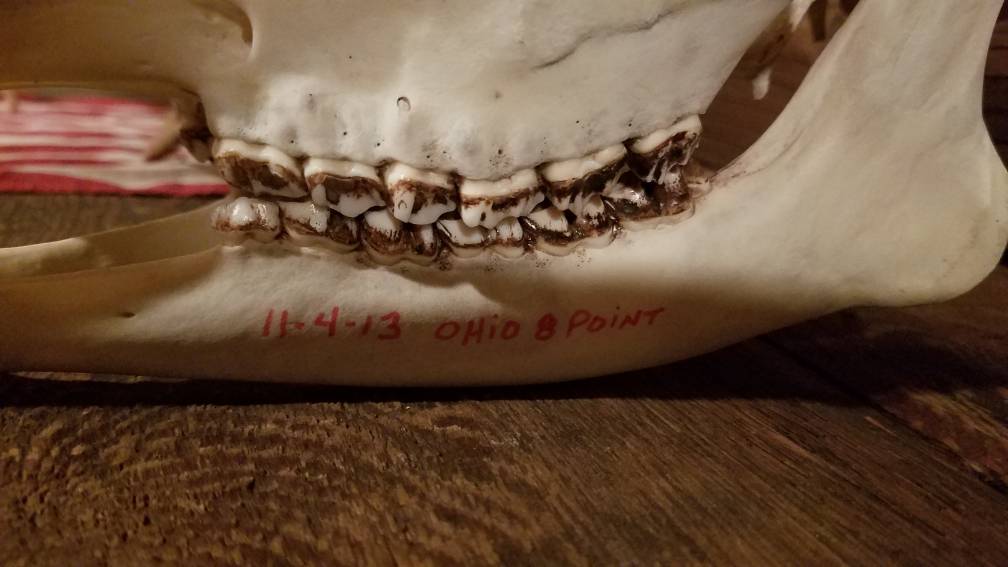Jeff H
Well-Known Member
I'm interested in knowing the age of a deer that I shot last night. Jawbone ageing seems less subjective than a general visual guess but I have little knowledge on what I'm looking for. He's at the processor now and I will get the head back for mounting but tell me when you guys think of these pictures of the upper/lower jawbone.
Upper jawbone. Not a lot there. 1/16th in or less. Note: the rigid part showing on the lower are not teeth, that is the lip.

This is a horrible picture but it was 1 am and I was pooped! Lower jawbone. The area between the incisors up front and the molars in the rear (not in picture. I could not get the mouth open far enough) is devoid of anything, just gum. The area is about 3 inches of gum. I could feel the molars further back in the mouth but could not see them much less get a picture of them.

Upper jawbone. Not a lot there. 1/16th in or less. Note: the rigid part showing on the lower are not teeth, that is the lip.

This is a horrible picture but it was 1 am and I was pooped! Lower jawbone. The area between the incisors up front and the molars in the rear (not in picture. I could not get the mouth open far enough) is devoid of anything, just gum. The area is about 3 inches of gum. I could feel the molars further back in the mouth but could not see them much less get a picture of them.



